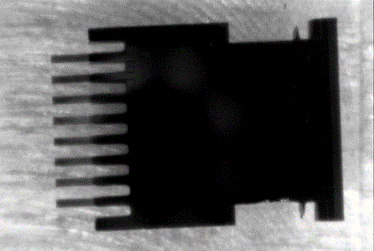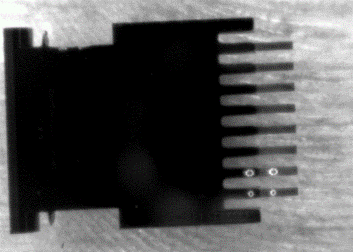Microcantilever Sensor
Cantilevers as a miniaturized and sensitive biochip.
Introduction
In the last years, microcantilevers have been increasingly used as mechanical transducers of molecular recognition and for the development of miniaturized and sensitive biochip platforms.
The principle is that intermolecular forces that result from molecular recognition events on the sensitised surface of a cantilever produce its nano-scale motion.
Mecwins technology is based on a combination of nanomechanical sensing and plasmonic emission with a sandwich immunoassay.
Main techniques for the nanomechanical response include the optical lever method, interferometry-based methods, and the piezoresistivity technique. The optical lever method is the most extended due to the extreme accuracy and easy implementation for measuring cantilevers immersed in liquids.
The applications include detection of cancer protein markers, pesticides, DNA hybridisation and pathogens. The great interest in this recent kind of biosensors relies on the label-free detection, high sensitivity, small sensor area, and the potential for simultaneous detection of tens, or even hundreds, of targets by making use of arrays of cantilevers. In fact, cantilever arrays can be mass-fabricated at low cost by adopting well-known semiconductor technology.

Mecwins was founded in 2008 by Dr. Javier Tamayo and Dr. Montserrat Calleja, Bionanomechanics group leaders from the Institute of Micro and Nanotechnology of Madrid (IMN – CSIC). IMN is a research institute that belongs to the National Scientific Reseach Council (CSIC), the largest public institution dedicated to research in Spain.

The Bionanomechanics Lab, at the Madrid-based Micro and Nanotechnology Institute (IMN), has been using the sciFLEXARRAYER S3 to immobilize thiolated single stranded DNA onto gold-coated silicon microcantilevers. Present research focuses on the detection of Mycobacterium tuberculosis. Plans for the utilization of the sciFLEXARRAYER for a range of applications, such as lung cancer detection or for the production of protein cantilevers, are underway.


Each cantilever finger has a width of around 80 microns. Capture molecules are spotted on the fingers thanks to SCIENION´s technology, including the advanced software with spot analysis and target recognition.
“SCIENION spotter provides the needed flexibility to address cantilever sensors of almost any size and design. This is a promising technology for the functionalization of microcantilevers as it is fast, versatile and suitable for large-scale integration. This technique suits the need of high throughput functionalization of arrays of nanomechanical systems as the inkjet head does not contact the surface of the fragile devices.”
Dr. Montserrat Calleja, Head of Dept. Devices, Sensors and Biosensors at Instituto de Micro y Nanotecnología de Madrid
